The time has come once again to review and update the National Electrical Code (NEC). This revision cycle rolls around every three years, but it seems like the ink is barely dry on the latest edition of the Code, and it’s time to start the revision cycle on the next edition!
The 2023 NEC process involves an NEC First Draft (FD) meeting, which was held virtually this Code cycle in November/December of 2020 and January of 2021. Suggested changes to the NEC, which are known as Public Inputs (PI), were reviewed at this First Draft meeting by the appropriate technical committee [Code Making Panel (CMP)]. The PIs that were acted upon favorably resulted in a First Revision (FR) to the First Draft (FD) of the 2023 NEC. The second public meeting for the NEC revision process is known as the NEC Second Draft (SD) meeting. This meeting will be held virtually in October of 2021. Submitted comments at this meeting are known as Public Comments (PC). At the time of the writing of this article, the Second Draft meetings had not taken place. Therefore, these proposed changes are based on the information we have from the 2023 NEC First Draft publication. The successful PCs that come forth from the Second Draft will result in a Second Revisions (SR) to the Second Draft (SD) of 2020 NEC. Appeals will be heard and voted upon for acceptance of the 2023 NEC at the NFPA Annual Conference in Boston, MA, in June of 2022. The NFPA Standards Council is scheduled to issue the 2023 NEC in August 2022 with a proposed publication date of September 2022.
In this article, we will take a look at some of the proposed changes from the 2020 NEC to the 2023 NEC that have generated the most discussion. Again, keep in mind that these proposed changes are just that — proposed. When this article was written (September 2021), the final version of the 2023 NEC was a long way from being final. These proposed changes are still subject to the NEC revision cycle and could change between now and the final version of the 2023 NEC.
New Articles
There are twelve (12) new articles proposed for the 2023 NEC. Some of these new articles are existing articles relocated to better locations. Some of these new articles were developed to improve usability and provide a platform to increase the focus on requirements associated with medium or high voltage requirements.
New Article 231: Electric Power Sources Interconnected with an Electric Utility
A new article was added to address issues with respect to alternative energy systems and how they connect and interface with service equipment. This new article recognizes that the interconnection of electric power sources that operate in parallel with the electric utility and is tightly coupled with the requirements around services and service-related equipment found in Article 230.
New Article 245: Overcurrent Protection for Systems Rated Over 1000 Volts AC, 1500 Volts DC
A new article was created to cover requirements for the installation of overcurrent protection of circuits and related electrical equipment permanently installed on-premises wiring over 1000 volts ac and/or 1500 volts dc, nominal.
New Article 305: Requirements for Wiring Methods and Materials for Systems Rated Over 1000 Volts ac, 1500 Volts dc, Nominal
This newly proposed article covers wiring methods and materials for systems rated over 1000 volts ac, 1500 volts dc, nominal. This new article attempts to organize medium voltage (MV) information into a separate article to provide the electrical industry, including inspectors, with more guidance in terms of medium voltage installations.
New Article 315: Medium Voltage Conductors, Cables, Cable Joints, and Cable Terminations
This new article revises what was a new article for the 2020 NEC, Article 311, into a new Article 315. This new article also proposes adding requirements for medium voltage (MV) cable joints, MV cable connectors, and MV terminations to provide complete system installation for MV cables and conductors.
New Article 335: Instrumentation Tray Cable: Type ITC
This new proposed Chapter 3 article revises and relocates previous Article 727 to new Article 335 covering the use, installation, and construction specifications of instrumentation tray cable (Type ITC). This article has application to instrumentation and control circuits operating at 150 volts or less and 5 amperes or less.
New Article 369: Insulated Bus Pipe: (IBP)/Tubular Covered Conductors (TCC)
New Article 369 is intended to address the installation of insulated bus pipe (IBP), also known as tubular covered conductor (TCC). IBP may achieve listing under the UL category of CVZL using the requirements published in UL 1366 (Outline of Investigation for Insulated Bus Pipe). This proposed article requires IBP to be listed, installed, supported, terminated, and tested in accordance with the manufacturer’s instructions by qualified persons.
New Article 371: Flexible Buss Systems
This new article has been proposed to cover the use and installation requirements of flexible bus systems and associated fittings. Flexible bus systems are an assembly of flexible insulated bus, with a system of associated fittings used to support and terminate the bus. Flexible bus systems are engineered systems for a specific site location and are ordinarily assembled at the point of installation from the components furnished or specified by the manufacturer.
New Article 395: Outdoor Overhead Conductors over 1000 Volts
This newly proposed article was previous Article 399 (proposed to be deleted), with all content for previous Article 399 being relocated to this new Article 395. As proposed, the relocation improves usability and provides a platform to increase the focus on requirements associated with medium or high voltage.
New Article 512 Cannabis Oil Equipment and Cannabis Oil Systems Using Flammable Materials
This new article covers cannabis oil preparatory equipment, extraction equipment, booths, post-processing equipment, and systems using flammable materials (flammable gas, flammable liquid–produced vapor, combustible liquid–produced vapor) in commercial and industrial facilities.
New Article 722 Cables for Power-Limited Circuits
This new Article combines common cabling requirements currently found in Articles 725, 760, and 770 of the 2020 NEC and proposes to relocate other cabling requirements from those articles into a single article. This new article will cover the general requirements for the installation of single- and multiple-conductor cables used in Class 2 and Class 3 limited power circuits, power-limited fire alarm (PLFA) circuits, and optical fiber installations. Parts I and V of this article provide the general cable requirements for power-limited circuit conductors and cables. If approved, Part II would cover additional cable requirements specifically for Class 2 and Class 3 circuits. Part III will cover additional cable requirements specifically for fire alarm systems. Part IV proposes to cover additional cable requirements specifically for optical fiber cables.
New Article 724: Class 1 Circuits
This new article is scheduled to cover Class 1 circuits that are not an integral part of a device or utilization equipment. Class 1 circuits are currently located in Article 725 with Class 2 and Class 3 circuits. This new article was created for Class 1 circuits as these circuits are typically not recognized by the IT industry as power-limited circuits and should not be in the same article with Class 2 and Class 3 circuits. Class 1 remote-control and signaling circuits have been proposed to be eliminated from Article 725 as the installation of these circuits is covered by the first four chapters of the NEC. There are no special conditions associated with these circuits. Class 1 remote-control and signaling circuit installation requirements are not dependent on the equipment being supplied unless specifically referenced in this new article.
New Article 726: Class 4 (CL4) Power Systems
A new Article 726 for Class 4 Power Systems was proposed as Class 4 systems are different than Class 2 or Class 3 power-limited circuits. These Class 4 systems do not limit the output of the power source, but rather the systems limit the energy and power available into a fault condition, including human contact, arcing and resistive faults. The technology referred to as Class 4 has been publicly referred to by names, but not limited to, Packet Energy Transfer (PET), Digital Electricity (DE), Pulsed Power, Smart Transfer Systems, and Fault Managed Power (FMP).
Definitions
All definitions have been proposed to be located or relocated to Article 100 of the NEC. In past editions of the NEC, definitions could be found in Article 100 or the XXX.2 sections of particular articles throughout the NEC. An example of this in the 2020 NEC can be found at 680.2, where 27 definitions related to swimming pools, fountains, and similar installations can be found. Historically, when a definition was found at XXX.2 of an article, that definition only applied to that particular article. This revision provides a more usable Code by providing a uniform process to find definitions. Users of the Code are currently required to look in multiple locations to determine if a term is defined. Other NFPA codes and standards utilize a single location for all definitions. The update to the NEC Style Manual now requires all the definitions to be moved to Article 100. If this proposed change holds true through the NEC revision process, there will be well over 800 definitions located in Article 100 of the 2023 NEC.

110.26(A)(6) – Flat, Level Working Spaces
New requirements were proposed to address grade, floor, or working platform in the required working space to being kept clear and as flat as practical in the working space. Having a flat level working space is vital to the safety of personnel working on the equipment.
210.12(F) – AFCI for Fire Houses, Police Stations, Etc.
New requirements were proposed to require arc-fault circuit interrupter (AFCI) protection for sleeping quarters in firehouses, rescue squads, police departments, and similar locations. These locations present similar hazards regarding electrical fires on branch circuits as a dormitory unit. Even though these areas in a fire station, police departments, etc., are not defined as a dormitory, these locations present similar hazards regarding electrical fires on these circuits. Dormitories were added to areas requiring AFCI protection during the 2014 NEC revision cycle.
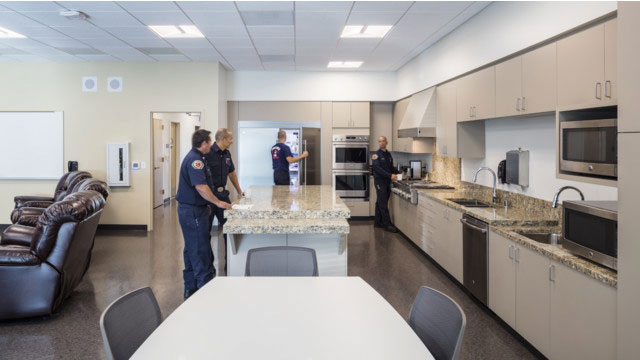
210.23(A) – 10-Ampere Branch Circuits
These new proposed requirements establish permission to allow 10-ampere branch circuits for such things as lighting outlets and dwelling unit exhaust fans. Adopted energy code(s) and energy efficiencies, in general, are bringing forward the possible applications of 10-ampere branch circuits for loads such as LED lighting and specific equipment. Loads not permitted on these proposed 10-amperes branch circuits would be such things as receptacle outlets, fixed appliances (except as permitted for individual branch circuits), garage door openers, and laundry equipment.
215.18 – Surge Protection for Feeders
A new section was proposed for surge protection to address the proper protection of areas served by feeders that are extended distances away from services that can result in limited surge protection. These areas supplied by a feeder would include dwelling units, dormitory units, guest rooms and guest suites of hotels and motels, and areas of nursing homes and limited-care facilities used exclusively as patient sleeping rooms. Surge protection was included in the 2020 NEC at services to address surge protection to protect the sensitive electronics and systems found in most modern appliances, safety devices (such as AFCI, GFCI, and smoke alarms), and equipment used in dwelling units. Surge protection from lightning, etc., is needed at feeders as well as services. This same basic requirement was also proposed for 225.42 for outside feeders.
220.5(C) – General Lighting Load Floor Area for Dwelling Units
This section is new, but these requirements are presently located at 220.12. This section was proposed to be revised to recognize general lighting load requirements throughout the entire dwelling unit. The floor area calculation has been changed to encompass all indoor areas of the dwelling unit. In the current edition of the NEC (and previous editions), the calculated load for dwelling units allowed the floor area not to include open porches, garages, or unused or unfinished spaces not adaptable for future use. For the 2023 NEC, it is being proposed to include “garages, or unused or unfinished spaces not adaptable for future use” in the calculated floor area.
220.57 – Load Calculations for Electric Vehicle Supply Equipment (EVSE)
When doing a load calculation, new requirements were proposed calling for electric vehicle supply equipment (EVSE) loads to be calculated at either 7200 watts (volt-amperes) or the nameplate rating of the equipment, whichever is larger. Electric vehicles and parking spaces with chargers for these electric vehicles are increasingly common practice at newer buildings. Electric vehicle increased popularity will make load demands for these vehicle charging stations a critical issue in future Code cycles. A new Informational Note has been proposed referencing 625.42 for sizing of an EVSE circuit.
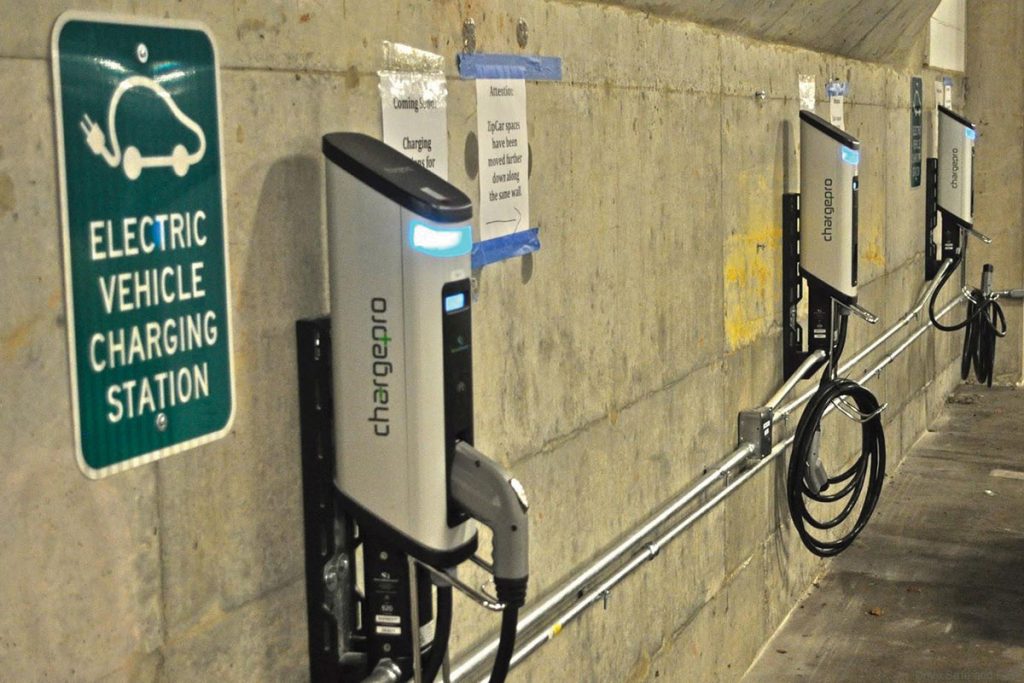
230.85 – Revisions to the Outdoor Emergency Disconnect for Dwelling Units
Revisions are being proposed to the outdoor “Emergency Disconnect” rule for dwelling units. Revision editorially relocates existing requirements currently in the parent text as new second-level subdivisions (per NEC Style Manual). A new exception was proposed to address the newly proposed 225.41, which addresses an emergency disconnect for an outside feeder at a dwelling unit. Part of the proposed language requires the emergency disconnect to be installed in a readily accessible outdoor location “on or within sight of the dwelling unit.”
240.11 Selective Coordination for Feeders with Service Overcurrent Protective Device
A new requirement was proposed to assure the service overcurrent protective device is less likely to open due to an overcurrent condition on a feeder that is not currently required to selectively coordinate with the service overcurrent protective device. If one or more feeder overcurrent protective devices are required to be selectively coordinated with a service overcurrent protective device, all feeder overcurrent protective devices supplied directly by the service overcurrent protective device are being proposed to be selectively coordinated with the service overcurrent protective device. Some feeder overcurrent protective devices must selectively coordinate with the service overcurrent protective device, such as is required for emergency systems at 700.32. Other feeder overcurrent protective devices are permitted to be fed from that same service overcurrent protective device and not be selectively coordinate with the service devices. Overcurrent conditions on one of the feeders that are not required to selectively coordinate with the service device can (and often does) open the service overcurrent device.
250.130 – Replacement of Existing Snap Switches Without an EGC Provided
Revisions and new text proposed to provide direction regarding providing an equipment grounding conductor or equipment bonding jumper to meet the requirements of Article 404 when an existing equipment grounding conductor is not provided at existing snap switches. Connections permitted as indicated at 250.130(C) (Replacement of Nongrounding Receptacle or Snap Switch and Branch Circuit Extensions). Existing 2020 NEC text only addressed Article 406 regarding the replacement of non-grounding type receptacles. A new Informational Note has also been proposed to provide a link to the 404.9 requirements for switches.
310.3(A) – Minimum Size of Conductors
The minimum conductor sizes for copper and copper-clad aluminum are being proposed to be reduced to 16 AWG copper and 14 AWG copper-clad aluminum. These proposed revisions are based on testing submitted in support of the use of copper-clad aluminum conductors for 10-ampere circuits and the decades of successful use of 16 AWG copper conductors in fixture wire, motor wiring, control wiring, and other current-carrying applications as permitted in the NEC. According to the substantiation for these proposed changes, the application of energy-efficient equipment, and the implementation of energy codes for modern construction, more options are available for reduced branch circuit loading. The result is that many branch circuits are capable of having a conductor current rating and an overcurrent device rating of 10-amperes. Same basic changes were proposed for 334.104 for conductor sizing for nonmetallic-sheathed cable.
314.24(C) – Clearances for Side-Wiring Entrances at Boxes
A new sub-section was proposed to be added to 314.24 to broaden the requirements for outlet and device boxes to have proper dimensions to allow equipment installed within these boxes to be mounted properly without the likelihood of damage to conductors within the box. The title of 314.24 was proposed to be changed from “Depth of Boxes” to “Dimensions of Boxes.” A new sub-section (C) was proposed titled “Clearances for Side-Wiring Entrances” to broaden this section to address side wiring entries. The existing language at the parent text of 314.24 only addresses approved depth and not the width of these boxes. Providing proper width will accommodate side-wiring entrances to these boxes.
404.1 – Wireless Control Switching Devices
A new sentence has been proposed to be added to the scope of Article 404, indicating that the article does not cover wireless control equipment to which circuit conductors are not connected. A wireless control device that initiates the switching function but does not connect to circuit conductors to operate is not a “switching device” and therefore is not under the purview of Article 404. An example of this type of wireless control equipment would be a wireless control switch for a ceiling (paddle) fan.
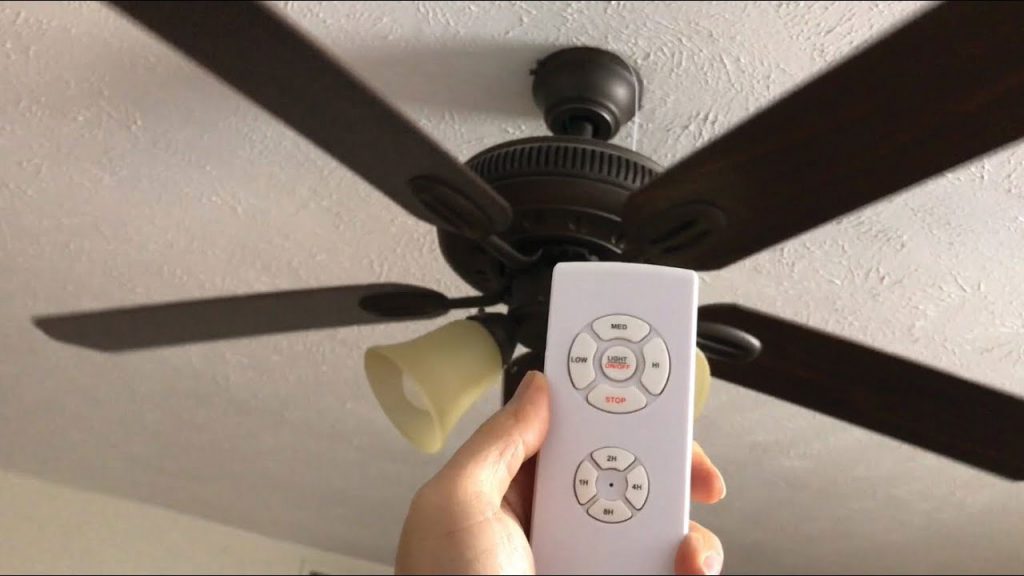
404.14(D) – Snap Switches with Push-in Terminals
A new sub-section is being proposed to indicate that push-in terminals of snap switches rated 15 amperes shall only be connected directly to 14 AWG solid copper conductors. For use with conductors other than 14 AWG solid copper, the snap switch must be listed and marked for the specific use. The UL standard for snap switches (UL Standard 20 Standard for Safety General-Use Snap Switches) and associated guide information under category code WJQR for snap switches with push-in terminals permit only 14 AWG solid copper conductors to be used at this time. This proposed change highlights this limitation for general use snap switches that may have push-in terminals provided. The increased usability of 14 AWG copper-clad aluminum for branch circuit wiring needs this limitation to ensure push-in terminals on wiring devices are installed according to their listing. Nothing in the proposed language mandates that the push-in terminals must be used. A similar proposal has been submitted for receptacles at 406.3(D).
406.9(C) – Receptacles Installed Around Tub or Shower Spaces
Revised Code language was proposed to improve and clarify the intent of the current Code language for receptacles installed around tub or shower spaces, which currently includes a restrictive 900 mm (3 ft) horizontal by 2.5 m (8 ft) vertical zone around a tub or shower space. These proposed changes clarify the zone location is to include the space below the zone and the tub rim. The revision also permits receptacles to be installed in spaces separated by a floor, wall, ceiling, door, window, or fixed barrier from the restrictive zone.
406.12(1) – Tamper-Resistant Receptacles for All Receptacles at All Dwelling Units
Revisions and new text have been proposed for tamper-resistant receptacles at dwelling units to include areas such as boathouses, mobile homes, and manufactured homes, including their attached and detached garages and accessory buildings to dwelling units and their common areas. The proposed revised language ensures the use of tamper-resistant receptacles installed in all of these dwelling-type occupancies, not just conventional stick-framed constructed dwelling units. This proposed revised Code language also eliminates the current limitation of tamper-resistant receptacles to areas “specified in 210.52 and 550.13.” This will mean ALL 15- and 20-ampere, 125- and 250-volt nonlocking-type receptacles in a dwelling will now be required to be of the tamper-resistant type.
408.38 – Panelboards Used with an Available Fault Current Above 10 kV
New Code language was proposed to add an evaluation requirement on systems with available fault currents above 10,000 amperes to the general provisions for panelboards. Typically, panelboards used where the available fault current is greater than 10,000 amps are evaluated with a specific enclosure. This proposed language will limit the ability to retrofit old panelboards in block walls or other types of construction where the enclosure cannot be removed, or it is prohibitively expensive to do so.
410.71 – Local Disconnecting Means Added for LED Luminaires
This proposed revised Code language will expand the required local disconnecting means for fluorescent luminaires with double-ended lamps to LED luminaires with double-ended lamps that are equivalent to fluorescent luminaires. The current Code text requires fluorescent luminaires (other than at dwelling units) that utilize double-ended lamps and contain ballast(s) that can be serviced in place to have a disconnecting means either internal or external to each luminaire. This local disconnecting means requirement was originally added to the NEC in response to an accident involving a double-ended fluorescent lamp ballast replacement. At the time, luminaire installations and repairs primarily consisted of doubled-end fluorescent lamps requiring a ballast. Since then, lighting systems have evolved, and fluorescent lamps are being discontinued and replaced with LED lamps. Many of the existing fluorescent luminaires are being upgraded to incorporate LED lamps to meet energy conservation requirements. The additional proposed requirement was added to address a hazard that would exist with either a fluorescent or LED style luminaire.
430.120 – Power Conversion Equipment Used in Adjustable-Speed Drive Systems
New proposed text will add provisions for power conversion equipment used in adjustable-speed drive systems with input ratings of 1000 volts or lower and output ratings of over 1000 volts, or vice versa. New proposed text will require compliance with Part X of Article 430 for circuits rated 1000 volts or lower and with Part XI for circuits rated over 1000 volts. Adjustable speed drive systems may use power conversion equipment that includes internal transformers, such that the output voltage does not match the input voltage. When only one of these voltages is over 1000 volts, the requirements of Part XI are only applicable to the higher voltage circuits.
500.6(C) – Combustible and Ignitible Fibers/Flyings
To align with revisions to NFPA 499 [Recommended Practice for the Classification of Combustible Dusts and of Hazardous (Classified) Locations for Electrical Installations in Chemical Process Areas], combustible fibers/flyings are being proposed to be added to address fibers and flying which remain in suspension for long periods of time and can form combustible mixtures when tested. This newly proposed sub-section reflects an error in NFPA 499 where a Class III ignitible fiber/flying and Class III combustible fibers/flyings were stated as being equal. This error was corrected by a tentative interim amendment (TIA) to NFPA 499-2021. Combustible material that is both greater than 500 µm (micrometer or micron) in nominal size, which can form an explosive mixture, was defined and stated to be a Class III location.
517.6 – Patient Care-Related Electrical Equipment vs. Reconditioned Equipment
A new section is being proposed to indicate that the reconditioning requirements of the NEC do not apply to patient care-related electrical equipment. Patient care-related electrical equipment is different than electrical equipment in 110.21(A)(2) (Reconditioned Equipment) as patient care-related electrical equipment is expected to be recommissioned or recertified when it is relocated. Two proposed informational notes will clarify that patient care-related electrical equipment is highly specialized and is not covered by the NEC. As seen and experienced throughout the COVID pandemic, it is imperative that hospitals be able to use patient care-related electrical equipment to maintain health care operations. This equipment must not be confused with “reconditioned” equipment.

547.26 – Type NM Cable Not Permitted to be Concealed in Agricultural Buildings
As proposed, Type NM cables will no longer be permitted to be concealed within walls and above ceilings of agricultural buildings (i.e., offices, lunchrooms, ancillary areas, etc.) or portions thereof, which are adjacent to or physically adjoined to livestock confinement areas. Rodents and other pests are common around such installations and will damage nonmetallic-sheath cable concealed wiring. It is common to see damage to this type of wiring from rodents and other pests chewing on the wiring. They will strip off the cable jacket and conductor insulation down to the bare conductor. This type of damage has resulted in catastrophic fires, loss of buildings, animals, and property.
555.3 – Electrical Datum Plane Distances
New Code text is being proposed to bring clarification to the electrical datum plane distances associated with a marina, boatyard, etc. These distances will include land areas subject to tidal fluctuation and areas not subject to tidal fluctuation. These distances do not consider extreme conditions due to natural or manmade disasters. The definition for “Electrical Datum Plane,” which will be located in Article 100, includes the words “normal high-water level,” which is a newly proposed defined term in Article 100 as well. Very similar Code text was proposed for Article 551, Recreational Vehicles and Recreational Vehicle Parks. to address the electrical datum plane distances located in an RV park.
555.36(C) – Emergency Disconnects for Marinas
A new sub-section was proposed to require a listed emergency electrical disconnect for each marina power outlet or enclosure that provides shore power to boats. This emergency electrical disconnect is to be clearly marked “Emergency Shutoff” in accordance with 110.22(A). This emergency shutoff device or electrical disconnect must be installed within sight of the marina power outlet or other enclosure that provides shore power to boats. It must be readily accessible, externally operable, manually resettable, and listed for use in wet locations. While the ground fault protection of equipment [required by 555.35(A)(1) and (A)(3)] may provide some protection to swimmers in the water away from an energized boat or dock, it will not provide electric shock protection for a swimmer touching an energized metal boat, dock, or ladder. An emergency disconnect within sight of the marina power outlet or enclosure providing shore power to a boat will allow bystanders to quickly de-energize power to the boat and dock nearest the swimmer, greatly reducing electric shock drowning (ESD) incidences.
680.54(C) – Equipotential Bonding of Splash Pads
A new sub-section is being proposed to clarify the portion of a splash pad that is required to comply with the equipotential bonding requirements of 680.26. For the purposes of equipotential bonding, the shell of a splash pad is defined as the area navigated by pedestrians bounded by the extents of the footing of the splash pad and rising to its exposed surface(s) and its collection basin area. The boundary of this area is to be considered the inside wall for the purpose of perimeter bonding.
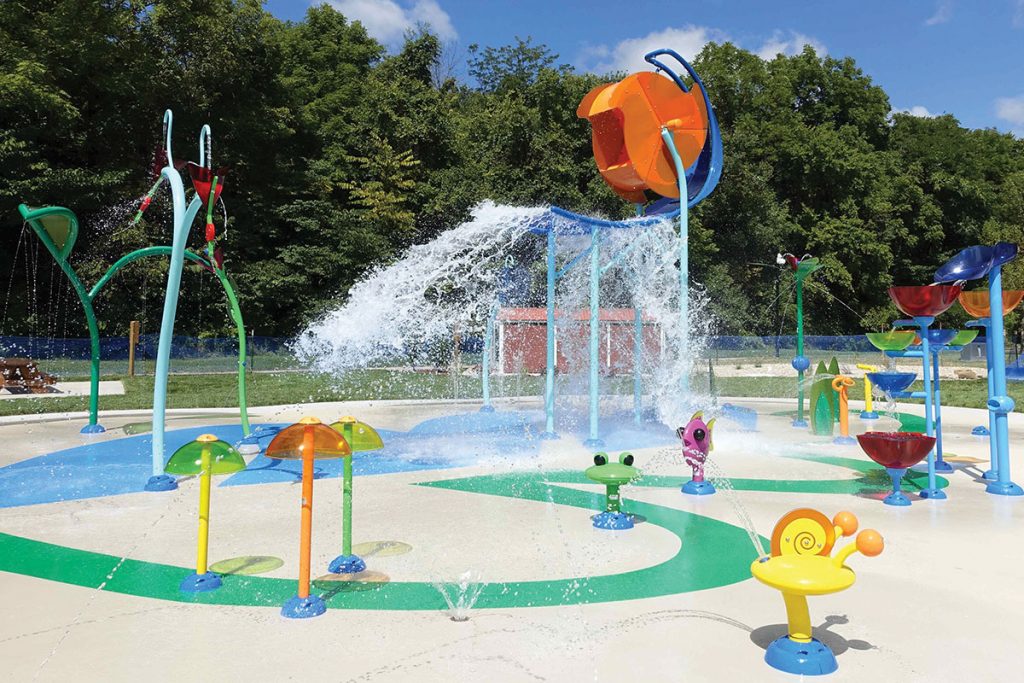
690.4(G) – PV Equipment Installed on Bodies of Water
A new sub-section has been proposed to be added concerning PV equipment floating on or attached to structures floating on bodies of water. This PV equipment must be identified as being suitable for the purpose and shall utilize wiring methods that allow for any expected movement of the equipment. Like all electrical equipment, PV equipment installed on floating structures is likely to be exposed to unique environmental and mechanical conditions. Though there is no single product safety standard in use today for these installations, these projects have been constructed successfully using specialized equipment with ratings matching the environmental conditions and engineering considering the unique application. This newly proposed sub-section provides some minimum requirements for designers, installers, and enforcers when considering these applications.
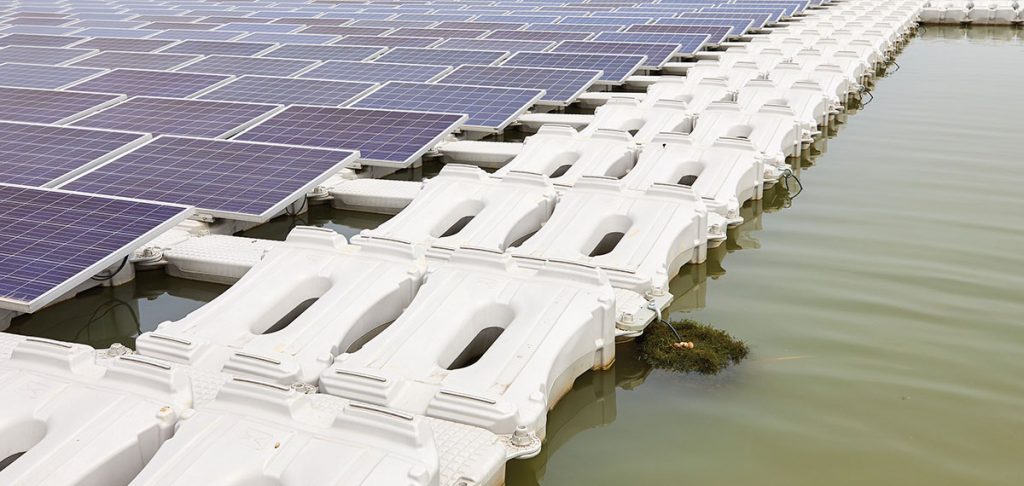
700.4(D) – Parallel Operations of the Emergency System Source(s)
A new subdivision was proposed to clarify that there are two distinctly different types of parallel operation for emergency systems. Section 700.4(D)(1) identifies requirements specific to applications where the emergency source(s) operate in parallel with a normal source, and 700.4(D)(2) identifies requirements for conditions where emergency sources operate in parallel only with each other. Some systems may utilize both conditions, and this proposed new language will allow both to be applied. For applications where an emergency source is used in parallel with a normal source, the required capacity to supply the emergency load will need to be maintained at all times. A reference to Article 705, Interconnected Electric Power Production Sources, has been proposed to be added to point users of the Code to the article where requirements for interconnected sources are located.
700.9 – Cybersecurity of Emergency Systems
A new section is being proposed to address cybersecurity issues involving an emergency system. In today’s high-tech, super-speed online world we live in, cybersecurity has become an aspect of safety and reliability as much as the electrical equipment itself, and it needs to be addressed by the NEC. An attack can affect the emergency control system, individual sensors, or other IT devices to the point of either preventing normal operation or displaying the appearance of normal operation while failing the system conditions. Examples of these unsafe conditions and equipment that could be affected by a cyber-attack include but are not limited to changing overcurrent protection settings, generator controls, supervisory control, and data acquisition (SCADA) systems, emergency stop functions, motor controllers, or fire protection systems.
705.20 – Source Disconnecting Means for Interconnected Power Sources
This section is being proposed to be modified in an attempt to clarify that a system disconnect is always required for a source system (such as PV, wind, fuel cell, energy storage system) while recognizing that a disconnect required and installed under one of the power source articles can satisfy this proposed 705.20 rule. The power source articles (Articles 690, 706, etc.) all include requirements for equipment (maintenance) and system disconnection. This proposed requirement is not necessarily requiring an additional system disconnect where one is already provided under the power source system article. The power source articles cover all necessary requirements for systems that are not interconnected when they are interconnected with other primary sources (utility source). Article 705 takes precedence for the interconnection of these sources.
Article 800 – Consolidation of Common Requirements in the Communication Articles
Several First Revisions were accepted by CMP-16 to continue the consolidation of common requirements from Article 805 (Communication Circuits), Article 820 (Community Antenna Television and Radio Distribution Systems), Article 830 (Network-Powered Broadband Communications Systems), and Article 840 (Premises-Powered Broadband Communications Systems) into Article 800 (General Requirements for Communications Systems), which was added for the 2020 NEC revision cycle. Article 800 is intended as a “general” article that applies to all the NEC Chapter 8 articles unless modified by the forenamed articles. This new article will serve as a placeholder for redundant requirements throughout Articles 805, 820, 830, and 840. Some of the common requirements proposed to move to Article 800 are requirements for installation of communication wires, cables, and equipment; overhead (aerial) wires and cables; underground systems entering the building; and plenum grade cable ties.
Conclusion
As stated earlier, these are just a few of the changes that have been proposed for the 2023 NEC. We are about halfway through the Code revision process, and these changes are subject to some revision or deletion altogether. Stay tuned to the 2023 NEC revision process to see what the future hold for the next edition of the NEC.




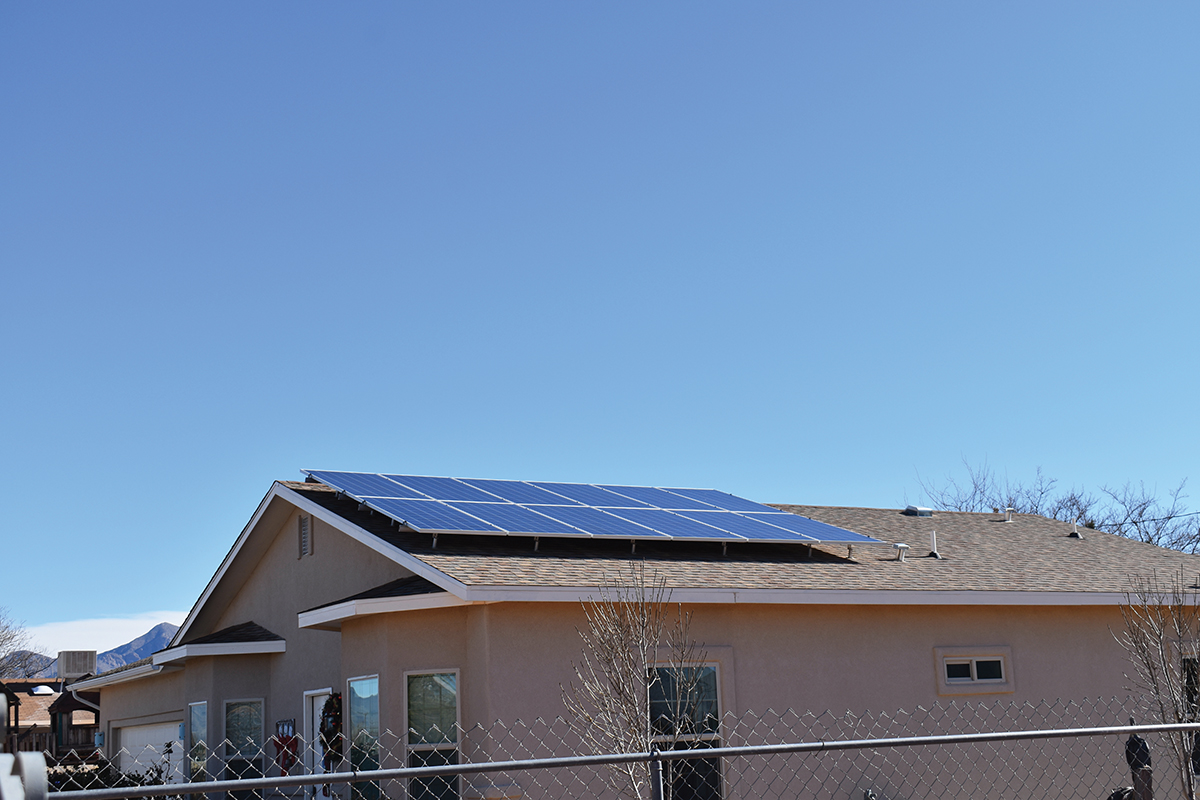
FOLLOW SOCIALS